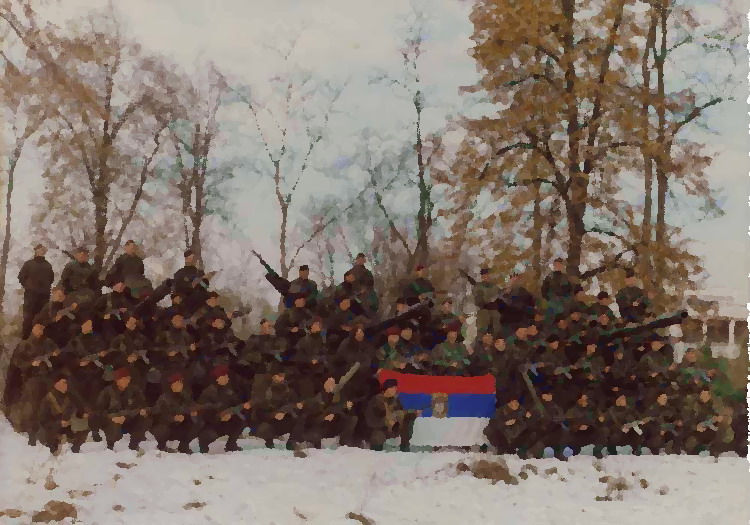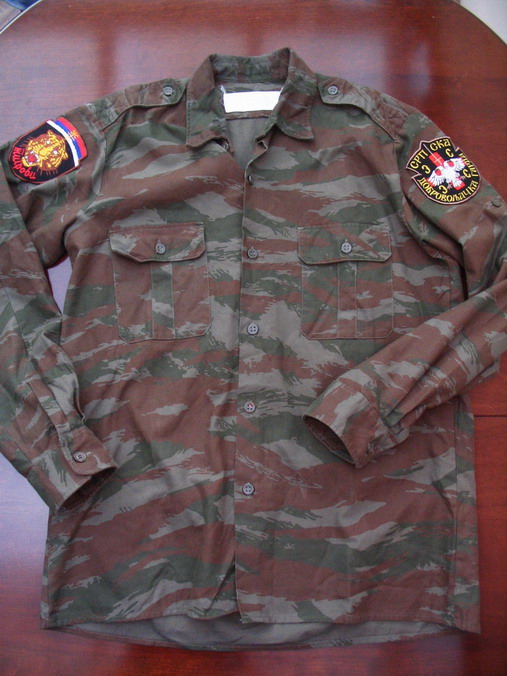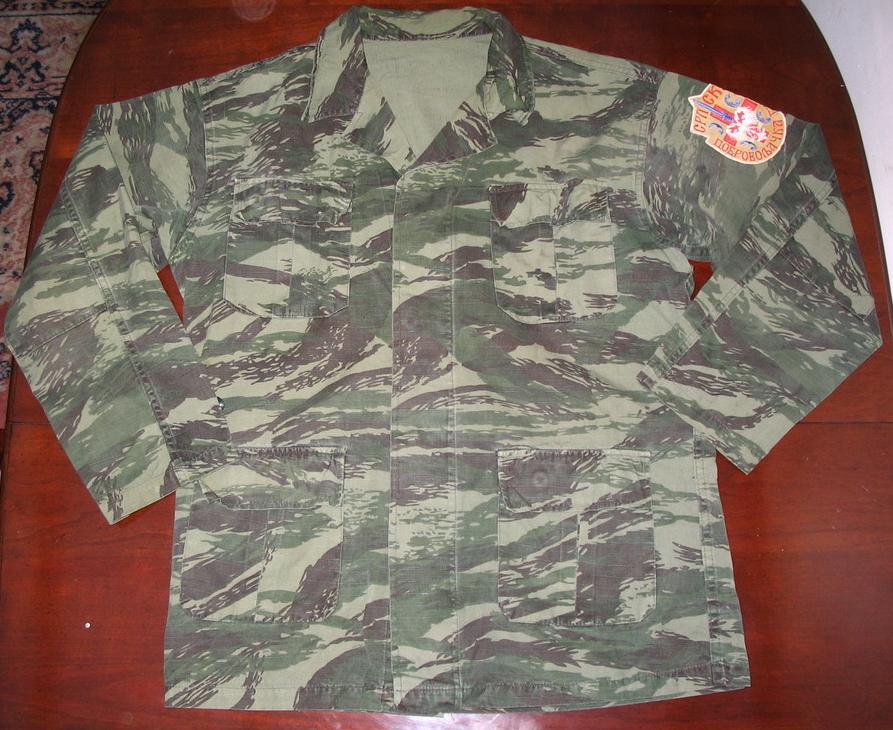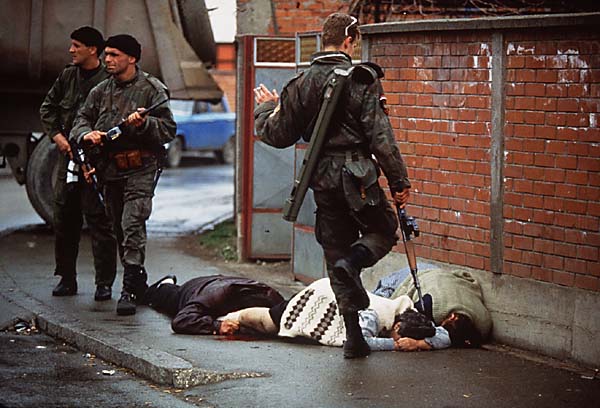The Republika Srpska Krajina was established in 1991. The Krajina was
an area of Croatia prodommently populated by Serbs who wished to remain part of a unified Yugoslavia or among the
ultranationalist supporters to be formed into a "Greater Serbia". The Army of republika sprska krajina (Vojska Srpske
Krajine (VSK)) was the military of the Republika Sprska Krajina.

In August 1991 the leadership of the Serbian Krajina (with support from Serbia) in their aim to create a Serb-dominated
state got the VSK to forcibly removed the non-Serb population of Krajina.
Over the following months, a large area of territory, amounting to a third of Croatia, was seized by the Serbs. The
non-Serbian population suffered heavily, fleeing or evicted with numerous murders, leading to the term of ethnic cleansing.
The bulk of the fighting occurred between August and December 1991, during which time approximately 80,000 Croats and
Muslims were expelled (with some killed), until the United Nations intervened with a peace plan the 'Vance Plan' in January
1992.

The Vance Plan called for the withdrawal of the JNA from Croatia and for the return of refugees to their homes.
On February 21, 1992, the creation of the United Nations Protection Force (UNPROFOR) was authorised by the UN Security
Council for an initial period of a year, to provide security to the RSK and returning refugees. UNPROFOR deployed throughout
the region in order to maintain the ceasefire, although in practice its light armament and restricted rules of engagement
meant that it was little more than an observer force. It proved wholly unable to ensure that refugees could be returned home.
The JNA withdrew in May 1992 leaving much of its weaponry and many of personnel behind which were turned over to the RSK's
security forces. The agreement effectively froze the front lines for the next three years. Croatia and the RSK had
effectively fought each other to a standstill.
Over the three years the economic situation in the Krajina became disastrous. By 1994, only 36,000 of its citizens were
employed out of a population of 430,000. The war severed its trade links with the rest of Croatia, with its few industries
left idle. The Serbian government seeing that the Krajina was not economically viable washed its hands of the krajina. This
affected its armed forces the VSK. Since the 1992 ceasefire had been agreed, Croatia had spent large sums of money importing
weapons and training its armed forces with the aid of American contractors. At the same time, the VSK had grown steadily
weaker, with its soldiers poorly motivated, trained and equipped. The VSK had only about 55,000 soldiers available to cover
a front of some 600km in Croatia plus 100km along the Bosnian borber 16,000 of these were stationed in eastern
Slavonia, leaving only some 39,000 to defend the main part of the RSK. In reality, only 30,000 of the theoretical 55,000
were capable of being fully mobilised. The VSK had little mobility and faced a far stronger Croatian army.
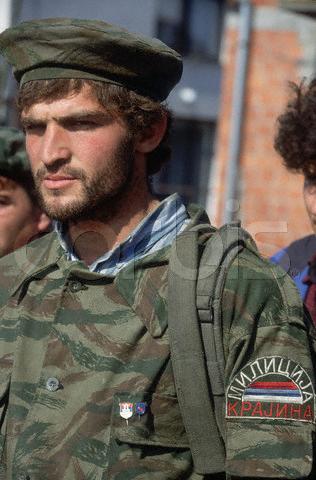
The RSK's end came in 1995, when Croatian forces liberated western Slavonia in Operation Flash (May) and overran the rest in
Operation Storm (August). As a consequence, almost the entire Serbian population fled. A number of Croatian army officers
(such as general Ante Gotovina; apparently ICTY was also preparing an indictment against the then president of Croatia
Franjo Tudjman) were indicted by the ICTY in the Hague on the basis of their command responsibility for the attrocities
committed by Croatian soldiers against the civilian Serbian population. Serbia did not intervene, having earlier indicated
in the state-controlled media that it was finally washing its hands of the Krajina Serbs.
Around 150,000�200,000 Serbs fled the RSK in 1995, most of whom ended up in Serbia, and some going to eastern Slavonia.
The bulk of them were evacuated immediately by the RSK authorities, while others fled after the operation due to fear and
uncertainty caused by the Croatian invasion. The widespread fear wasn't unsupported, because a number of Serb civilians were
indeed killed by advancing Croatian forces and in several atrocities following the operation - UNPROFOR documented more than
two hundred murders by November, while rumours amounted to several thousand. All the former territory of RSK had been
reintegrated into Croatia by 1998.
